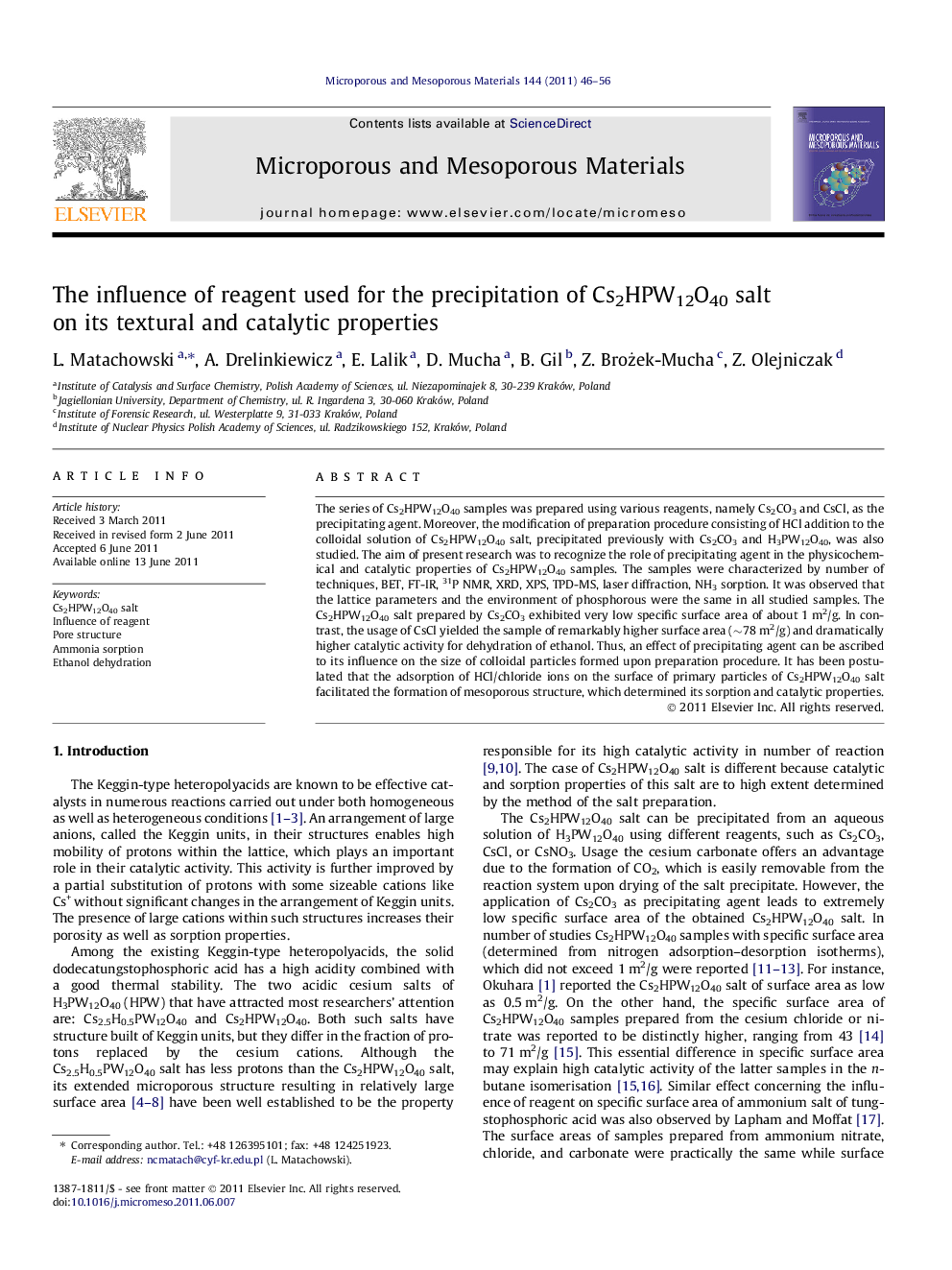| Article ID | Journal | Published Year | Pages | File Type |
|---|---|---|---|---|
| 75112 | Microporous and Mesoporous Materials | 2011 | 11 Pages |
The series of Cs2HPW12O40 samples was prepared using various reagents, namely Cs2CO3 and CsCl, as the precipitating agent. Moreover, the modification of preparation procedure consisting of HCl addition to the colloidal solution of Cs2HPW12O40 salt, precipitated previously with Cs2CO3 and H3PW12O40, was also studied. The aim of present research was to recognize the role of precipitating agent in the physicochemical and catalytic properties of Cs2HPW12O40 samples. The samples were characterized by number of techniques, BET, FT-IR, 31P NMR, XRD, XPS, TPD-MS, laser diffraction, NH3 sorption. It was observed that the lattice parameters and the environment of phosphorous were the same in all studied samples. The Cs2HPW12O40 salt prepared by Cs2CO3 exhibited very low specific surface area of about 1 m2/g. In contrast, the usage of CsCl yielded the sample of remarkably higher surface area (∼78 m2/g) and dramatically higher catalytic activity for dehydration of ethanol. Thus, an effect of precipitating agent can be ascribed to its influence on the size of colloidal particles formed upon preparation procedure. It has been postulated that the adsorption of HCl/chloride ions on the surface of primary particles of Cs2HPW12O40 salt facilitated the formation of mesoporous structure, which determined its sorption and catalytic properties.
Graphical abstract.Figure optionsDownload full-size imageDownload as PowerPoint slideHighlights► The influence of reagent used for Cs2HPW12O40 precipitation on its surface area. ► Higher catalytic activity of Cs2HPW12O40 precipitated with CsCl than that with Cs2CO3. ► Strong increase of specific surface area of Cs2HPW12O40 salt after HCl addition.
